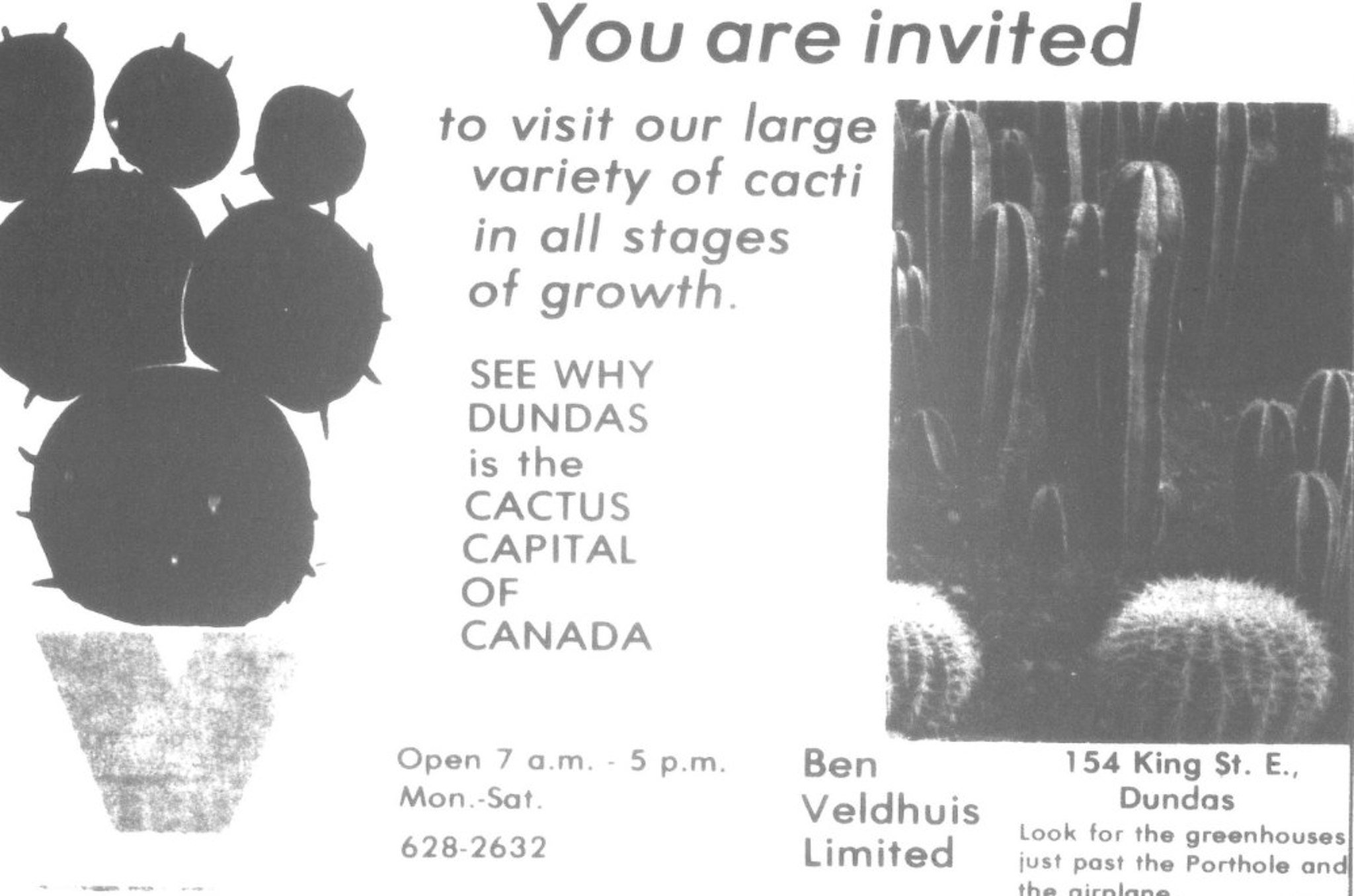When you think of markers of Ontario history, does a cactus come to mind? If the answer is no (which it probably is), then buckle up for the wild story of Dundas, Ont.
A beautiful town in the City of Hamilton, Dundas is located at the bottom of the Niagara Escarpment, and was incorporated in the 1840s. It wouldn’t be for another 100+ years that Dundas would get the name of Cactus Capital of Canada — and here’s how.
What’s the story?
It all started in 1927 when Barend “Ben” Veldhuis landed in Canada from Holland, making Dundas his home in the 1950s with his wife, Marika. Veldhuis went on to purchase Peterson Greenhouse at 154 King St. E., marking the birth of his cactus empire.
Initially, Veldhuis was only importing and distributing cacti, but he soon developed his cultivation processes. From humble beginnings to a truly massive operation involving African violets, cacti, succulents, and bromeliads, believe it or not, Veldhuis was selling millions of plants by the 1970s.
Historical accounts estimate that three to five million cacti were being sold yearly during the heyday of Veldhuis Greenhouse, according to the Dundas Museum, while the Hamilton Conservation Authority (HCA) states that Veldhuis had more than 20 greenhouses on the site.
That kind of volume quickly earned Veldhuis an international reputation as an esteemed grower (aka the Cactus King) with ads promoting his plants, labelling Dundas as The Cactus Capital of Canada. In fact, Dundas Town Council officially gave the town that moniker on March 1, 1976.
Ads prompting the greenhouse invite the public the visit the variety of cacti “in all stages of growth,” while photos show rows and rows of towering spiky plants. The Dundas Museum even states that international letters arriving in Dundas were addressed to Cactus, Canada.
A lasting legacy
While Veldhuis and his cacti were flying high in the 1970s, the rest of Dundas was facing a different kind of fate. The decade marked a downturn for the town, with some of the largest employers closing down — Lennard’s Knitting Mills and Grafton’s Clothing. It’s Veldhuis’s success story that invigorated the town, providing it with a sense of pride.
The Cactus King eventually called it quits and retired in 1988, selling the business to employees Dianne Woods and Frank Nucciarelli, according to the Dundas Museum. Cacti and other tropical plants were grown on site until 2001.
Eventually, the greenhouse would close down for good, leaving behind a prime piece of land. In 2008, it was purchased by the HCA to naturalize the area. In 2010, the remaining greenhouses were bulldozed, leaving behind a red-brick chimney, which still stands today.

Fun fact: the chimney was found to be housing Chimney Swifts — a threatened bird species, which is why it was preserved and maintained.
Now, the site of the famed Veldhuis Greenhouse is Canal Park, filled with native species, a trail, and beautiful scenes of the Desjardin Canal.
Cactus, Canada, today
While the golden days of Veldhuis and his cacti are long gone, Dundas still has pieces of its cactus history. The Thirsty Cactus is a beloved local watering hole on King Street, serving up sizzling Tex-Mex plates for over 20 years.
You can’t forget the Dundas Cactus Festival either, which was named in honour of the Veldhuis greenhouses in 1976. It still runs today, honouring the man who put Dundas, Ontario, on the map.
Check out the Dundas Cactus Festival, which marks its 50th anniversary this year, from Aug. 15 to 17.
Recent Posts:
These Toronto parks have outdoor gyms and you don’t need a membership to workout
Going to the CNE? Here’s what you need to know before visiting Toronto’s beloved fair


